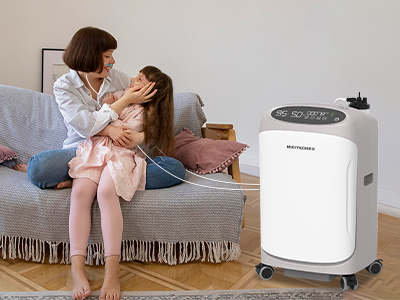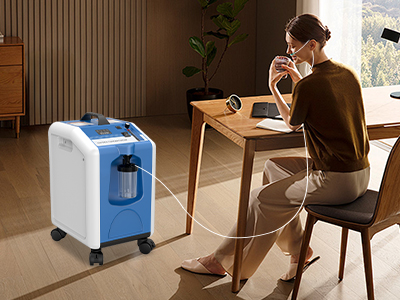27 Dec 2024
Oxygen concentrators play a vital role in oxygen therapy, offering a lifeline to individuals who rely on them for respiratory support. However, as time passes, their parts may become obsolete, no longer needed, or even dysfunctional. What happens then? Discarding them haphazardly is neither environmentally sound nor the best use of resources. Properly managing unused oxygen concentrator parts can help reduce waste, protect the environment, and even assist others in need.
Assessing the Condition of the Parts
Before deciding what to do with your oxygen concentrator parts, it's essential to assess their condition. Are they still functional, or have they reached the end of their lifespan? Inspect components like filters, tubing, and power cords for wear and tear. Functional parts can often be reused, donated, or sold, while non-functional ones may be destined for recycling or disposal. A thorough evaluation ensures that each part is dealt with appropriately, minimizing waste and maximizing utility.

Repurposing Functional Components
Even when an oxygen concentrator is no longer needed for its intended purpose, many of its parts can be repurposed creatively. For instance, power cords and connectors can be used in DIY electronics projects, while sturdy housing materials may find new life in craft or repair projects. Some parts, like tubing or filters, might even be useful for non-medical applications, such as creating irrigation systems for small gardens. Repurposing isn’t just practical—it’s an eco-friendly way to extend the lifecycle of materials that might otherwise be discarded.
Donating Usable Parts
Donating functional oxygen concentrator parts can make a meaningful difference to individuals or organizations in need. Local clinics, charitable foundations, and international medical missions often accept donations of gently used medical equipment. Before donating, ensure the parts meet safety and quality standards. Proper cleaning and sterilization are also critical to ensure the parts are safe for their new users. By donating, you not only help reduce waste but also contribute to improving access to healthcare resources for underprivileged communities.
Recycling Non-Functional Parts
When parts are no longer functional, recycling becomes the most responsible option. Oxygen concentrators often contain recyclable materials such as plastics, metals, and electronic components. Recycling these materials reduces the strain on natural resources and prevents harmful substances from ending up in landfills. Look for certified electronic waste recycling facilities in your area or consult with local environmental agencies to find appropriate recycling programs. Many components, such as circuit boards and aluminum casings, have high recyclable value and can be given a second life in other industries.
Returning Parts to Manufacturers
Some manufacturers offer recycling programs or buy-back options for unused oxygen concentrator parts. These programs ensure that parts are handled in an environmentally conscious manner and often involve refurbishing functional components for reuse. Check with the manufacturer of your oxygen concentrator to see if they have a take-back program. Not only does this relieve you of the burden of disposal, but it also guarantees that the parts are processed according to industry standards.

Selling Parts for Spare Use
If the parts are in good condition, selling them is another viable option. Many individuals and small healthcare providers look for affordable spare parts for repair or maintenance purposes. Online platforms like eBay, Facebook Marketplace, or dedicated medical equipment forums are excellent places to connect with potential buyers. Be transparent about the condition of the parts and provide detailed descriptions to ensure buyers know exactly what they’re purchasing. Selling used components can help recoup some costs while providing value to someone in need.
Disposing of Parts Safely
Certain parts of oxygen concentrators may contain hazardous materials that require special handling during disposal. For example, lithium-ion batteries in portable concentrators should never be thrown in regular trash due to the risk of fire or environmental contamination. Consult your local waste management service to understand how to safely dispose of such items. Proper disposal methods not only prevent environmental damage but also comply with legal regulations for handling medical and electronic waste.
Raising Awareness About Medical Equipment Recycling
Promoting awareness about the importance of recycling and repurposing medical equipment is crucial in fostering a culture of sustainability. Share your knowledge with friends, family, and local healthcare providers to encourage responsible disposal practices. By creating a network of informed individuals, you can amplify the impact of your efforts and contribute to a broader movement toward eco-consciousness in the medical community.
Conclusion
Dealing with unused oxygen concentrator parts doesn’t have to be a challenge. Whether you choose to repurpose, donate, recycle, or sell, every thoughtful action contributes to reducing waste and promoting sustainability. As users of medical equipment, we have a shared responsibility to ensure that our actions balance environmental stewardship with accessibility for those who need these resources most. By taking these steps, you can turn an obsolete oxygen concentrator into an opportunity to help others and protect the planet.
Keywords: Oxygen concentrator
Originally published 27 Dec 2024, updated 27 Dec 2024.